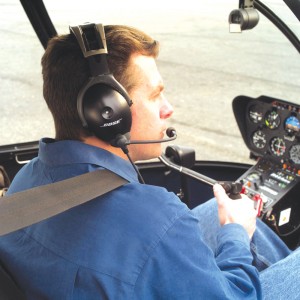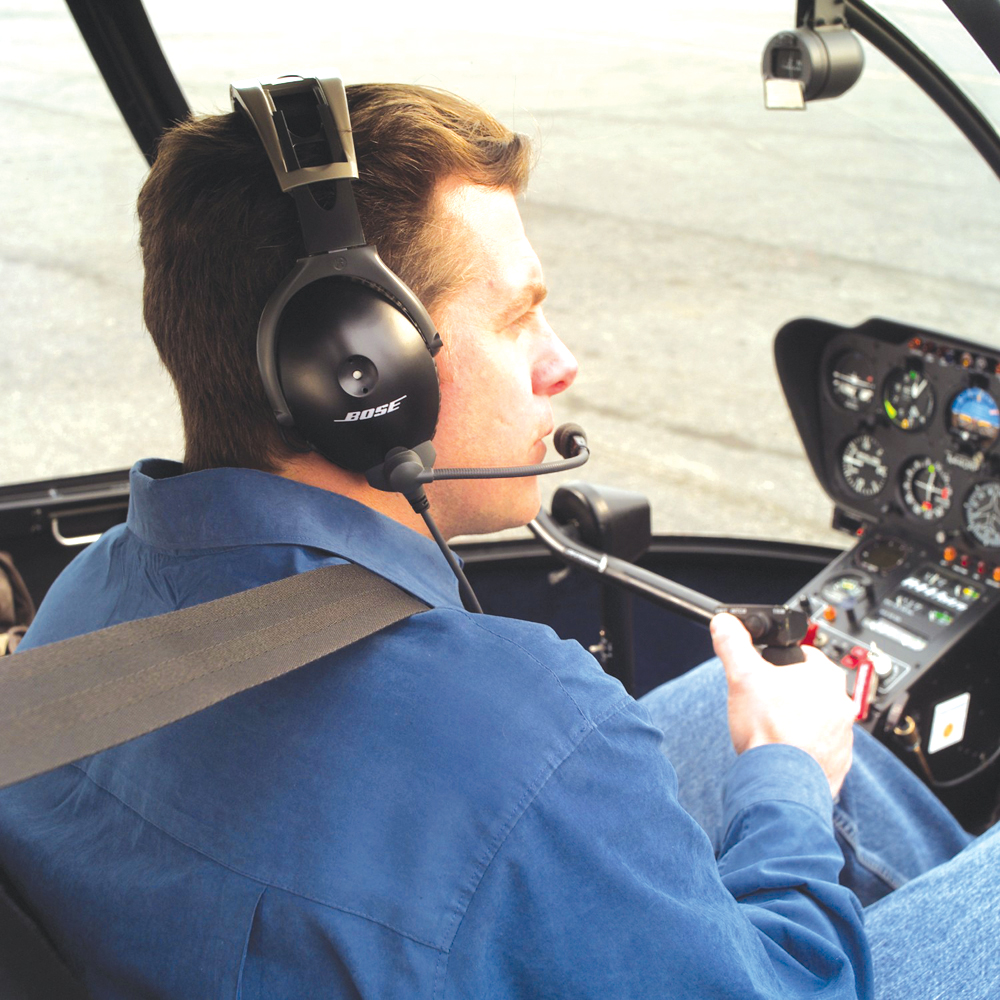By S. Clayton Moore

The Bose headset uses the same technology as headsets designed for the International Space Station, the M-1 Abrams battle tank and on U.S. Air Force C-130 and AWACS aircraft.
It isn’t often that general aviation pilots get access to technology so hot that the military uses it as a standard in tanks and submarines, but Bose technology has always been a unique proposition. Known primarily for innovations in the field of music technology, Bose is continuing its technological legacy with its Aviation Headset X (“Ten”). A unique blend of modern technology and old-fashioned know-how, the headset offers improved electronics to dampen down the harsh noises of the cockpit while maintaining a level of comfort for long journeys.
Although its high-tech qualities make the headset seem like a new development, it has actually been on the drawing boards for over a quarter century. The company’s first commercially available headset, the Bose Series One, has been on the market since 1989, and many are still in use.
The story of Bose applications is inexorably tied to its famous and unusual founder, Dr. Amar Bose, who, at 75, still comes to work five days a week as CEO. In 1956, the young scientist went in search of speakers to recreate the sound of concert halls in New York. After a fruitless search, he went about making them. After spending decades researching psychoacoustics, his flagship 901 stereo speakers made him a household name for acoustic products.
Today, the company has 7,500 employees and $1.6 billion in annual revenue, making it bigger than Houghton Mifflin Publishing and New Balance running shoes, other companies based in Framingham, Mass. An unusual aspect of Bose’s approach is that it plows 100 percent of its profits back into research development. That has allowed the company to branch out not only into aviation, but also into more mysterious projects such as an automobile suspension system, in development since 1985.
Research and development is the primary reason Dr. Bose has chosen to retain the company privately despite its massive success. Placing equal weight upon the character and the technical abilities of the Bose Corporation has allowed him to maintain a tremendous amount of independence.
In fact, Dr. Bose was inspired to create the headset while on a plane. During a commercial flight from Europe in 1978, Bose was hugely disappointed with the passenger headset. Soon after, he began formulating the basic concept and technology for a headset that would not only reproduce speech and music with high fidelity, but also simultaneously reduce unwanted cockpit noise. Prototypes were evaluated in U.S. Air Force flight tests beginning in 1985.
“The research for the Air Force quickly uncovered that applications where there are lots of low-frequency noise benefit from this active noise-canceling technology,” explained Chris Miller, senior production manager of communications products, Bose Noise Reduction Technology Group, Framingham, Mass. “In small general aviation aircraft, there are incredible amounts of noise energy; these low-frequency noises are almost impossible to cancel with a passive headset design.”
The first headsets to emerge were on board the famous Voyager around-the-world flight by Dick Rutan and Jeana Yeager in 1986.
“Early on, when the research was still in the early years and still years away from having a real product ready for production, one of the chief research engineers learned about the project,” Miller said. “Because of the extreme need for weight conservation, there was no sound deadening in the aircraft. As a result, the flight surgeons on the aircraft predicted the pilots would lose up to a third of their hearing as a result of this flight. Our engineer decided he had to see if our technology would be valuable to them. As soon as Dick and Burt Rutan (Voyager’s designer) went for a flight with our prototype, they immediately declared it mission-critical for Voyager.”
As soon as pilots worldwide heard about the headset, they were clamoring to get the technology for themselves. Capitalizing on the prototype’s unusual test, the original Bose Acoustic Noise-Canceling Headset was introduced in 1989.
Bose advanced the technology by leaps and bounds when it introduced the Aviation Headset X at Oshkosh in 1998. The new design offered improvements in performance, comfort, size and weight reduction.
“It was really a breakthrough because it uses new technology we called tri-port technology, named for the three small holes on the side of the earcup,” Miller said. “It allows us to have a very small earcup that is ingenious in how it uses the outside air to have a more efficient and well-performing active noise cancellation system, but with a smaller, lighter earcup that requires less clamping force. It’s a new level of both performance and comfort in a lightweight headset that weighs less than 12 ounces.”
The company also recently introduced its proprietary AdaptiSense headset circuitry, which senses the need for power and regulates battery output. In quieter settings, engineers are hearing from pilots that are getting upwards of 100 hours of battery life from two AA batteries.
One major attraction of Bose’s program is its 30-day flight trial, which convinces many customers of its quality.
“There are lots of competitors out there and lots of different planes,” Miller said. “We always encourage people to try it and fly it. That’s the bottom line. Compare it to other headsets. Once people fly with it for a few hours, they’re hooked.”
In fact, the headsets are built so well that Bose engineers still haven’t figured out how long they’ll last.
“We still have Series One headsets in use and they’re 15 years old,” Miller said. “We don’t know what the upper limit on lifespan is yet. They’re extremely durable.”
They must be. GA users are essentially using the same headsets that are currently used by sonar operators on U.S. Navy submarines, on all AWACS advanced monitoring planes and even on the International Space Station.
“The core technology is basically the same,” Miller said. “Certainly, it’s a different physical design to suit the rough-and-tumble world that soldiers subject them to, but it’s essentially the same technology customized to these military applications.”
In the end, these new applications are just a logical extension of the initial concept developed by Dr. Bose so long ago. “This is one of the technologies that Dr. Bose is very proud of,” Miller said.
For more information, visit [http://www.bose.com/].











